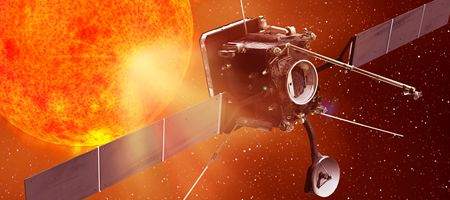The European Space Agency is to launch a mission to the sun that will get closer than ever before.

It’s signed a €300 million contract with Astrium UK for the Solar Orbiter mission, which is set to launch in five years’ time for a seven-year mission.
Solar Orbiter will study the Sun in detail and examine its effects on the solar system. It will carry a suite of instruments to measure the particles, fields and waves of the plasma through which it travels, and at the same time make observations of the sun’s surface and outer atmosphere.
At its closest point, says Astrium, Solar Orbiter will be closer to the sun than Mercury, at just 42 million kilometers. Orbiting outside the ecliptic plane, it can carry out long-duration observations of the same region of the Sun’s surface, including the polar regions.
To get to the right spot, it will need to make a complex series of gravitational-assist fly-bys past both Earth and Venus.
“Design challenges include accommodating and resourcing a large suite of cutting-edge instruments and ensuring stringent magnetic and molecular cleanliness to enable the most sensitive scientific measurements to be made effectively,” says Astrium.
At its closest approach, sunlight is thirteen times more intense than it is for satellites orbiting the Earth, making it hard to protect its instrument suite.
“To achieve this, the design includes a heat shield and incorporates new high-temperature solar array technology,” says Astrium.
Solar Orbiter builds on the success of the SOHO mission,launched in December 1995. Orbiting 1.5 million km from Earth, it’s now been observing the sun for 17 years. It’s revolutionised space weather forecasting by providing up to three days notice of major solar events.





